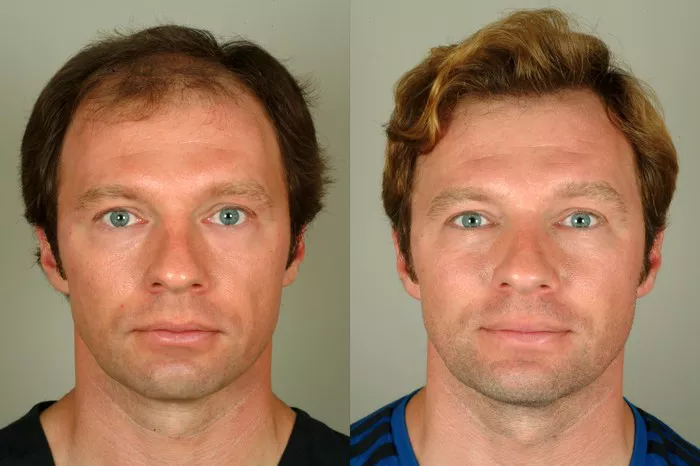Hair loss can be a deeply personal and challenging experience, impacting self-esteem and confidence. While many people seek surgical solutions like hair transplants, non-surgical hair replacement has emerged as a popular and effective alternative. This article explores what non-surgical hair replacement is, the various methods available, their benefits, potential drawbacks, and everything else you need to know to make an informed decision.
Understanding Non-Surgical Hair Replacement
1. Definition
Non-surgical hair replacement refers to a range of techniques and products designed to restore the appearance of fuller hair without invasive procedures. These methods cater to individuals experiencing varying degrees of hair loss, from thinning to complete baldness.
2. Historical Context
Non-surgical hair replacement has a long history, dating back to ancient civilizations that utilized wigs and hairpieces. In recent decades, advancements in technology and materials have led to more realistic and effective solutions, making them accessible to a wider audience.
Methods of Non-Surgical Hair Replacement
1. Hairpieces and Wigs
Types of Hairpieces
Full Wigs: These cover the entire head and are available in various styles, colors, and materials.
Topper Pieces: Designed to cover specific areas of thinning hair, they blend seamlessly with the wearer’s natural hair.
Materials Used
Synthetic Hair: Made from artificial fibers, synthetic wigs are often more affordable and require less maintenance.
Human Hair: Real human hair offers a more natural look and feel but typically comes at a higher cost.
2. Hair Extensions
Hair extensions can add volume and length to existing hair, providing a temporary solution for those not ready to commit to a full hair replacement.
Types of Extensions
Clip-in Extensions: Easily applied and removed, ideal for temporary use.
Tape-in Extensions: Semi-permanent options that blend seamlessly with natural hair.
Micro-link Extensions: Individual strands attached without heat or glue, allowing for flexibility.
3. Hair Integration Systems
Hair integration systems involve a mesh base that is attached to the scalp, allowing for natural hair to weave through the system. This method creates a fuller appearance while retaining some natural hair.
4. Scalp Micropigmentation (SMP)
SMP is a non-invasive procedure that involves tattooing tiny dots on the scalp to mimic hair follicles. This technique can create the illusion of a fuller head of hair and is particularly beneficial for those with thinning hair.
Benefits of Non-Surgical Hair Replacement
1. Immediate Results
One of the most significant advantages of non-surgical hair replacement is the instant transformation. Individuals can achieve a fuller head of hair without the lengthy recovery period associated with surgical options.
2. Non-Invasive
Non-surgical methods eliminate the risks and complications associated with surgical procedures, making them appealing to those wary of surgery.
3. Versatility
Non-surgical hair replacement offers a wide range of options, catering to different preferences, budgets, and levels of hair loss.
4. Low Maintenance
Many non-surgical solutions require less upkeep than surgical procedures, allowing individuals to enjoy their results without significant time commitments.
5. Reversibility
Unlike surgical hair transplants, non-surgical solutions can be easily removed or changed, providing flexibility for users.
Potential Drawbacks
1. Temporary Solutions
While non-surgical methods offer immediate results, they are often temporary and may require regular maintenance or replacement.
2. Cost Considerations
High-quality hairpieces and extensions can be expensive, and ongoing costs may accumulate over time.
3. Comfort and Fit
Some individuals may experience discomfort or difficulty adjusting to wearing hairpieces or extensions, especially during the initial stages.
4. Lifestyle Limitations
Certain non-surgical solutions may not be suitable for active lifestyles, as they can be affected by sweat, humidity, or physical activity.
Ideal Candidates for Non-Surgical Hair Replacement
1. All Degrees of Hair Loss
Non-surgical hair replacement is suitable for individuals experiencing any level of hair loss, from mild thinning to complete baldness.
2. Individuals Seeking Immediate Results
Those looking for quick fixes without the downtime of surgery will benefit from non-surgical options.
3. Budget Considerations
For individuals who may not want to invest in a hair transplant, non-surgical methods offer more affordable alternatives.
Post-Application Care
1. Maintenance of Hairpieces and Wigs
Cleaning: Regular washing and conditioning are essential to maintain the appearance of hairpieces and wigs.
Storage: Proper storage when not in use will help extend the life of the hairpiece or wig.
2. Care for Hair Extensions
Gentle Handling: Careful brushing and avoiding excessive heat will prolong the life of hair extensions.
Avoiding Chemicals: Limiting exposure to harsh chemicals can prevent damage to the extensions.
3. Scalp Micropigmentation Aftercare
Sun Protection: Applying sunscreen to the scalp can prevent fading of the pigment.
Avoiding Excessive Moisture: Keeping the scalp dry for the initial healing period is crucial.
Alternatives to Non-Surgical Hair Replacement
While non-surgical hair replacement offers many benefits, other options can also address hair loss:
1. Surgical Hair Transplant
Surgical options like Follicular Unit Extraction (FUE) or Strip Harvesting provide permanent solutions for individuals with sufficient donor hair.
2. Hair Restoration Products
Over-the-counter topical treatments, such as minoxidil (Rogaine), can promote hair growth and are suitable for those looking for non-invasive solutions.
3. Platelet-Rich Plasma (PRP) Therapy
PRP therapy involves injecting concentrated platelets into the scalp to stimulate hair growth, offering a non-surgical yet effective option.
Conclusion
Non-surgical hair replacement presents an innovative and flexible solution for individuals facing hair loss. With a variety of methods available, from hairpieces and wigs to scalp micropigmentation, there are options to suit diverse needs and preferences. While these solutions provide immediate results without the risks of surgery, potential drawbacks such as cost and maintenance should be considered. Ultimately, understanding all available options empowers individuals to make informed choices, allowing them to regain their confidence and embrace their appearance.
Related topics:
- What Is a Long Hair Transplant? A Comprehensive Overview
- FUE vs. FUT Hair Transplant: Understanding Your Options
- What Is DHI Hair Transplant? A Complete Guide


